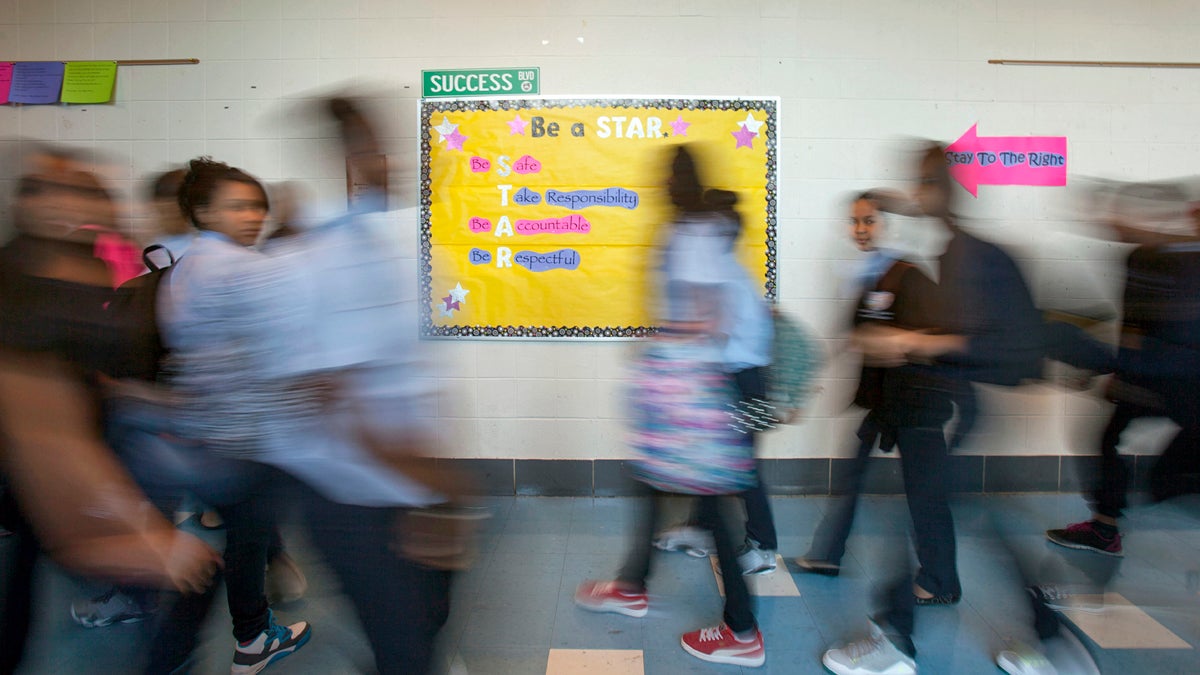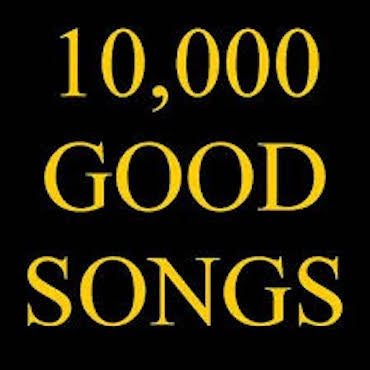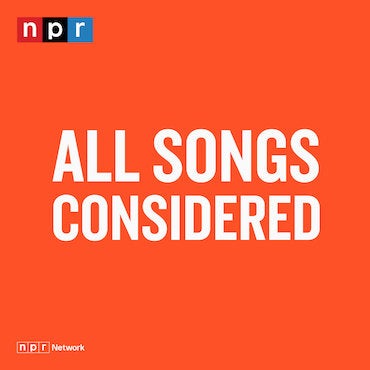Study calls for at least $3.2 billion in added Pa. school funding
Listen
Students at the Young Women's Academy at Feltonville Arts and Sciences middle school change classes in Philadelphia
Can you put a price tag on what it would cost to ensure that every student in Pennsylvania can meet academic standards?
The advocacy group Public Interest Law Center says the commonwealth’s own data point to the need for at least $3.2 billion in added state funding.
When the state’s bipartisan basic education funding commission published its report last year, it came up with a new formula for distributing new state education dollars. The formula acknowledges that districts face added burdens, for instance, when educating students in poverty, or those still learning English.
But the panel very specifically avoided a crucial question: how much money would it take for all students to score proficient on state tests?
So the Public Interest Law Center did its own analysis.
“Nobody has been actually talking about what districts really need,” said staff attorney Michael Churchill.
The Law Center’s report finds that if the tenets of the new formula are applied to the average instructional costs of schools statewide, a “conservative” estimate shows the need for $16.5 billion dollars in added support — $3.2 billion of which it says should come from the state.
To put that in context, the state spent $5.72 billion in 2014-15 on regular education.
To reach this $3.2 billion figure, The Law Center and other advocates are pushing for a $400 million increase in each of the next eight years.
In an interview last week, Governor Tom Wolf — who’s staked his reputation on delivering a historic boost in education funding — said that would be politically impossible.
“Part of the funding requirement, though, is not so much an increase in the number of dollars. It’s a change in the way we distribute funds,” said Wolf, whose main goal has been to restore school districts still feeling the effects of cuts that happened in 2011.
This year’s historic budget impasse ultimately led to a $200 million education boost.
Wolf is now pushing for a $350 million education funding increase in this year’s budget, but hasn’t committed to a specific number beyond that, saying he’d seek “reasonable increases.”
The Law Center’s report says that’s not going to deliver the outcome the state’s students need. When averaging the instructional spending of Pennsylvania’s top performing districts, the report finds the state should add $4.3 billion in school funding.
These numbers are on par with other studies. The “costing out” study commissioned by the state legislature in 2006 called for the state to invest an additional $4.3 billion. A report composed by the Campaign for Fair Education Funding last year pushed for a $3.6 billion increase.
Churchill hopes Wolf and legislative leaders take his analysis seriously.
“It’s been politically impossible in the past because no one has been willing to say this is what the general assembly’s own studies show is needed. And that’s what we’re attempting to do here,” he said.
Republican leaders say the money needed to reach the Law Center’s projection would overwhelm Pennsylvania taxpayers, possibly unnecessarily.
“They’re making an assumption that more money will buy you a better education, and we haven’t seen evidence of that,” said Jenn Kocher, spokeswoman for senate Republicans.
NPR recently delved deeply into the debate over the impact of money on schools.
On behalf of a coalition of school districts and families, the Public Interest Law Center has asked Pennsylvania’s Supreme Court to decide if the state has broken its constitutional responsibility to provide a “thorough and efficient system of public education.”
WHYY is your source for fact-based, in-depth journalism and information. As a nonprofit organization, we rely on financial support from readers like you. Please give today.



